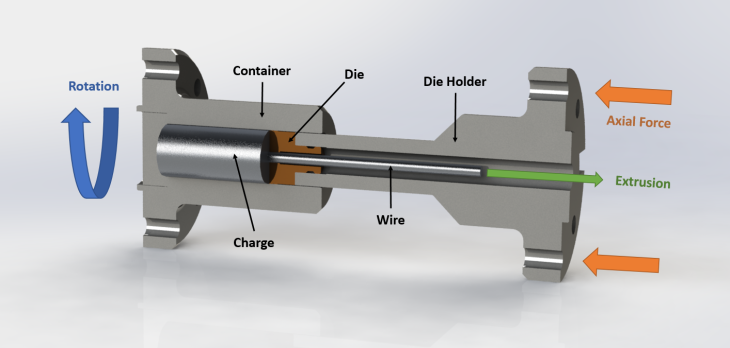Friction Extrusion & Consolidation
Friction Extrusion and consolidation process group is a research group working on investigation of Value Added Materials (VAM) by tailoring the microstructure and properties of the material. VAM are highly engineered structural and functional materials having advanced properties created through the technological development and knowledge intensive process. One of the challenges is to produce VAM in an effective and efficient way. Friction based processing, such as the friction extrusion processing, appears as a potential method to produce such value added materials by utilizing a high deformation rate and a relatively low processing temperature.

Schematic illustration of the friction extrusion process
Friction Extrusion is a solid-state processing technology involving severe plastic deformation and frictional heating that can be used to form fully consolidated extrudes. The charge material e.g. metal chips, scraps, powder or bulk as-cast billet rotates relative to the extrusion die, while an axial force is applied to press the die against the charge material. The friction between the charge material and the die introduces severe plastic deformation and generates heat via friction and shearing that softens the charge materials. The softened material is pressed through the die and consolidates, forming advanced wire, rods or tubes with optimized properties.
The quality of the microstructure and extrudate properties depends on the interplay of solid-state deformation mechanism at the non-equilibrium condition, which improves the materials significantly. Both experimental and simulation approaches are used for a better understanding of the process mechanisms.
Groupleader
Institute of Materials Mechanics
Phone: +49 (0) 4152 87 - 2070
Helmholtz-Zentrum hereon GmbH
Max-Planck Straße 1
21502 Geesthacht
